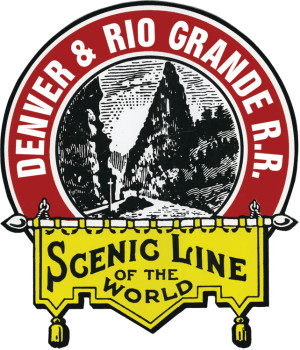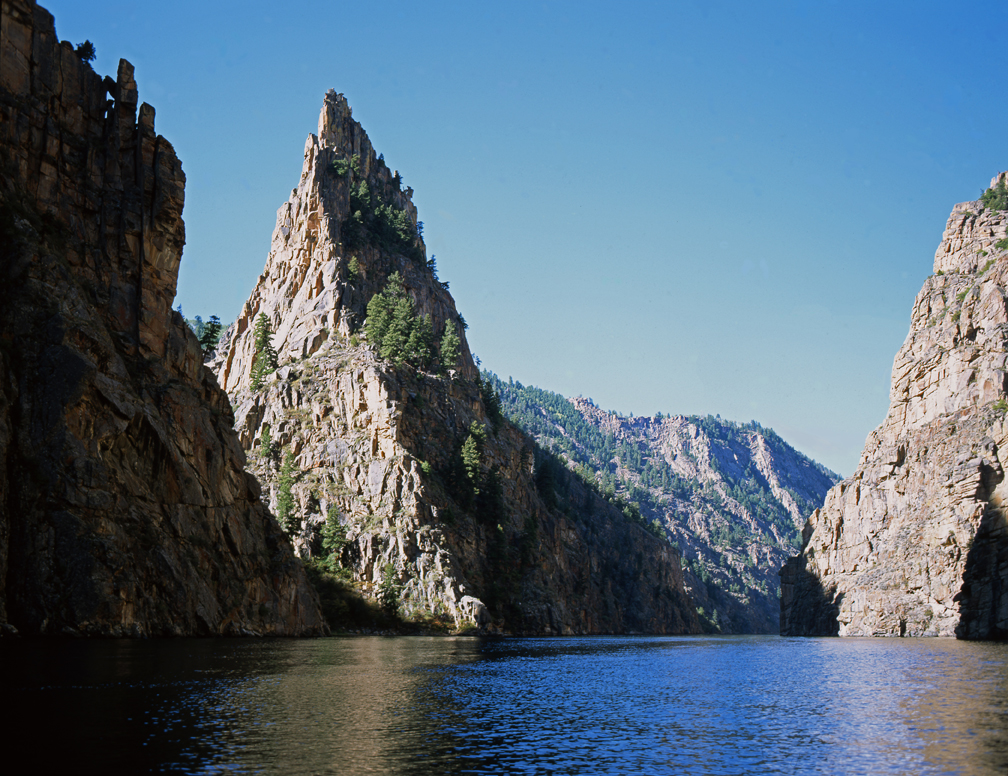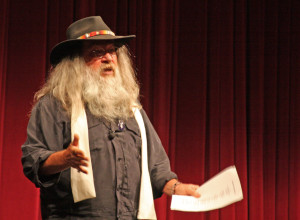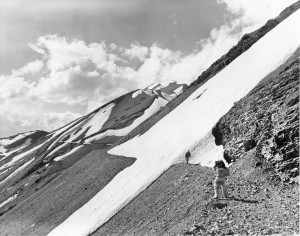By Forrest Whitman
How many Colorado Central readers have seen the Curecanti Needle? It’s one of those well-known, but seldom visited iconic sites in the Central Colorado region. It’s located in the Curecanti National Recreation Area in the upper Black Canyon of the Gunnison. The access road off Colorado Hwy. 92 is short and well marked. The path to the three overlooks might be a little dicey for folks who are physically challenged, but it looks doable. We took it easy on the rain slick-rocks on our recent visit.
 When you reach the overlooks, you might check to see if anyone has a fear of heights. You’ll be looking straight down hundreds of feet into the Black Canyon below, but you’re in for quite a sight. Rising straight up out of the water is the impressive needle itself. It’s easy to see why the Denver and Rio Grande Railroad picked this spire as its logo back in 1884. The needle rises straight up, dead steep from the water lapping at its base. It has been climbed, though it is said to be very difficult. At one time there was a flag raised atop the needle to commemorate a brave surveyor who lost his life on the steep sides of the canyon as he was sighting the route of the railroad.
When you reach the overlooks, you might check to see if anyone has a fear of heights. You’ll be looking straight down hundreds of feet into the Black Canyon below, but you’re in for quite a sight. Rising straight up out of the water is the impressive needle itself. It’s easy to see why the Denver and Rio Grande Railroad picked this spire as its logo back in 1884. The needle rises straight up, dead steep from the water lapping at its base. It has been climbed, though it is said to be very difficult. At one time there was a flag raised atop the needle to commemorate a brave surveyor who lost his life on the steep sides of the canyon as he was sighting the route of the railroad.
Today the original D&RGW tracks are under the Morrow Point impound water, but in their day, passengers would get out and stare straight up at the needle. Ever the promoter of rail passenger lines, General William Jackson Palmer, owner of the D&RG, saw the needle as a promotional tool. He was quick to call it “The scenic line of America.” His marketing manager, with the great name of Shadrach K. Hooper, went the general one better and quickly started marketing “the scenic line of the world.” His brochure went on to pontificate: “Whether traveling for business or health and pleasure, the mountain scenery is unequaled in variety and grandeur by that of any other railway in either hemisphere.”
Another railway magnate was watching, as always. Jay Gould, the General’s old enemy, lurked. Gould employed one of his many subsidiary lines, the Denver, South Park and Pacific, for his promotional task. He touted the wildflower- rimmed tracks up to the Alpine Tunnel. In his brochures he claimed that South Park crossed “the highest point reached by rail in North America.” In his 1886 brochure he enthused: “It is something to know that the world cannot duplicate this ride – this audacity of engineering; man has always stopped short of this extreme.”
Some readers may want to visit both the Alpine Tunnel and the Curecanti Needle and see which is truly the more grand historic railroad sight. I’d vote for the needle.
Forrest rides and writes about trains and is happy Sen. Udall has secured track improvement money so he won’t spill his cocktail on the Southwest Chief this fall.



